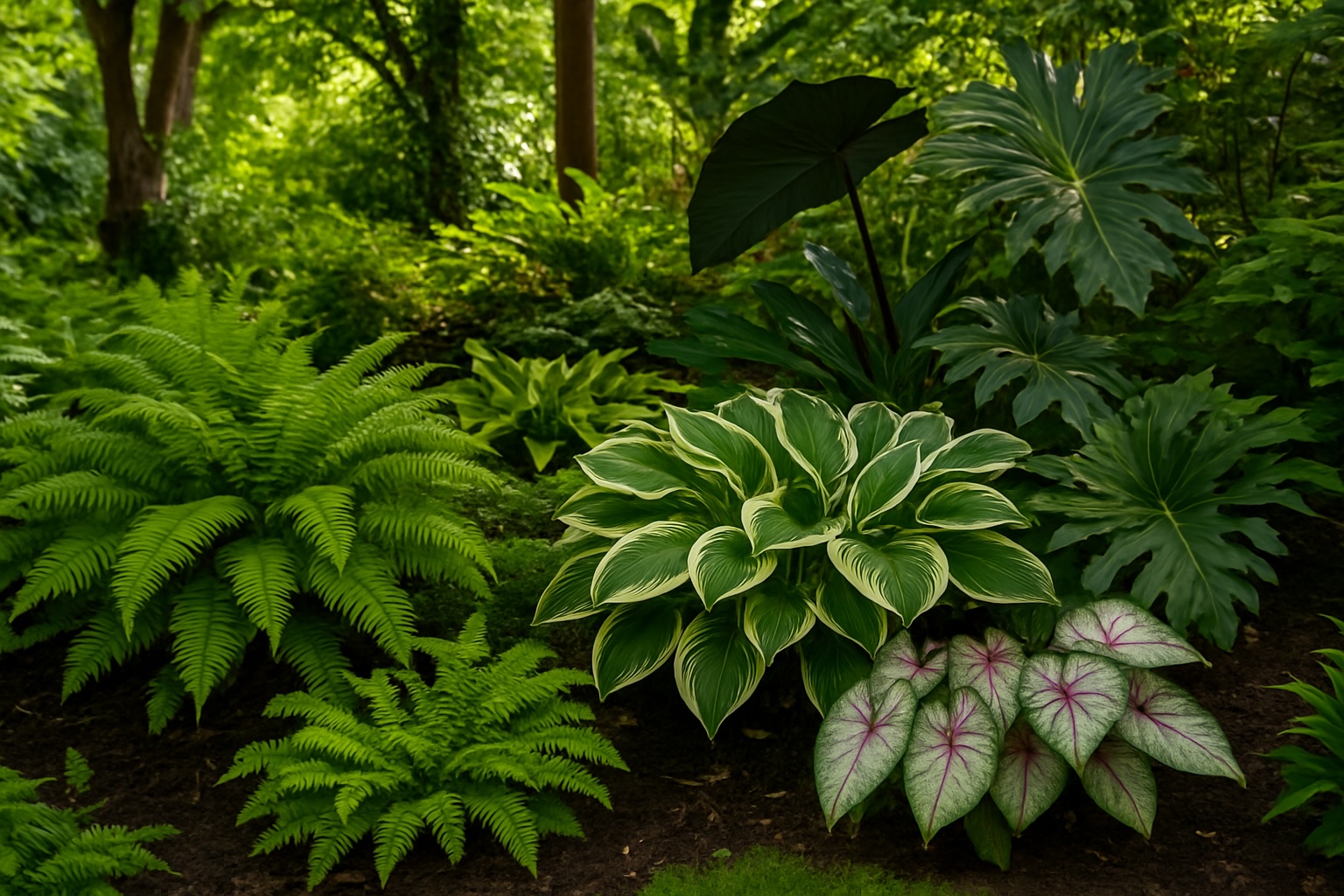Atlanta’s hot, humid summers create a paradise for certain plants—if you know how to care for them. From ferns and caladiums to shade-loving tropicals, humidity-loving plants can transform your garden or home into a lush oasis. But that same humidity can bring unique challenges, from fungal diseases to sudden wilting if care routines aren’t dialed in.

Whether you’re planting outdoors in a shaded yard or cultivating a collection of moisture-loving houseplants, this guide will help you keep your humidity-loving plants happy and healthy all year in Atlanta’s climate.
What Makes a Plant “Humidity-Loving”?
- Native Habitat: Many thrive in forests or wetlands where air moisture is high year-round.
- Leaf Structure: Broad, thin leaves maximize water uptake and transpiration, but can be prone to rot if air isn’t circulating.
- Root Systems: These plants prefer soil that’s moist but never soggy, relying on steady humidity for optimal growth.
Top Humidity-Loving Plants for Atlanta Gardens
- Ferns: Boston fern, maidenhair fern, and holly fern add soft texture and thrive in shaded, moist beds or hanging baskets.
- Hostas: These classics bring bold foliage in various colors. They love morning sun, afternoon shade, and damp, rich soil.
- Caladiums: Known for colorful leaves, caladiums perform best with steady moisture and dappled sunlight.
- Elephant Ears (Colocasia): Giant leaves and dramatic size make this a showstopper in shaded spots with regular watering.
- Begonias: Both tuberous and rex begonias thrive in Atlanta’s humidity with filtered shade and consistent moisture.
- Tropical Houseplants: Philodendron, peace lily, and Monstera can be grown outdoors in pots during summer or year-round indoors.
Tips for Planting & Care
- Site Selection: Choose locations protected from harsh afternoon sun—think under tall trees, beside fences, or on the north side of your home.
- Soil Prep: Amend heavy clay with compost or peat moss to improve drainage and moisture retention. Add mulch to keep soil consistently moist.
- Watering: Water deeply but avoid standing water. Most humidity-lovers prefer soil that stays damp to the touch but not waterlogged. Drip irrigation or soaker hoses help maintain steady moisture.
- Mulching: A thick (2–3 inch) layer of pine straw or bark mulch keeps roots cool and prevents rapid drying.
- Fertilizing: Feed monthly with a balanced, slow-release fertilizer during the growing season for strong leaf growth.
Disease & Pest Prevention
- Air Circulation: Humidity plus stagnant air can invite fungal diseases like powdery mildew and leaf spot. Space plants so air flows freely around them, and prune any crowded areas.
- Morning Watering: Always water at the base of plants early in the day, so leaves dry before nightfall. Wet foliage overnight encourages disease.
- Watch for Pests: Slugs, snails, and spider mites are common. Use natural deterrents like diatomaceous earth or introduce beneficial insects to help control them.
Indoor Humidity-Lovers: Houseplant Tips
- Group houseplants together to create a mini humidity zone.
- Use pebble trays or a room humidifier during dry winter months.
- Avoid placing plants near air conditioning or heat vents, which dry out the air.
- Wipe leaves with a damp cloth to remove dust and help with moisture uptake.
Design Ideas for Atlanta Gardens
- Mix bold hostas, lacy ferns, and colorful caladiums for a layered look in shaded beds.
- Line north-facing walkways with elephant ears and begonias for tropical curb appeal.
- Add a water feature or birdbath to increase humidity and attract pollinators.
- Grow ferns and trailing plants in hanging baskets on covered porches or patios.
Recommended Local Resources
- UGA Extension – Fulton County
- Atlanta Botanical Garden
- Local nurseries: Pike Nurseries, Garden*Hood Atlanta, Habersham Gardens
Frequently Asked Questions
- How often should I water humidity-loving plants?
Check soil moisture daily during hot weather; water when the top inch feels dry, but avoid keeping roots constantly soggy. - Can I grow these plants indoors year-round?
Yes—many humidity lovers thrive as houseplants in Atlanta, especially if grouped together or placed in kitchens/bathrooms with higher humidity. - How do I prevent fungal diseases?
Ensure good air flow, water in the morning, and remove any infected leaves as soon as you spot them. - Will these plants survive full sun?
Most humidity-loving plants prefer filtered light or shade. Direct afternoon sun can scorch leaves and dry out roots too quickly.
With the right care, Atlanta’s humidity can help you grow a lush, healthy garden full of beautiful moisture-loving plants—indoors and out.

